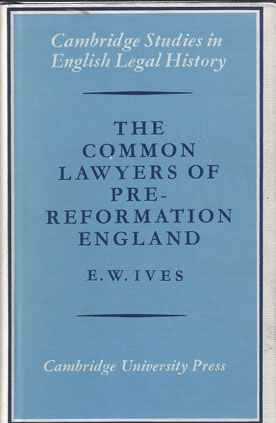
Out of Print
The English common lawyers wielded their greatest influence in the late fifteenth and early sixteenth centuries, with names like Fortescue, Littleton and More.
In these years they were more than the only organized lay profession: in the infancy of statute, they, more than anyone, shaped and changed the law; they were the managerial elite of the country; they were the single most dynamic group in society.
This book is a study of their formative impact on the whole of English life. Part I examines the legal profession, its position, recruitment, training and career structure, taking as an example the career of Thomas Kebell, a serjeant at-law from Leicestershire, for whom documentation is unusually complete.
Part II analyses legal practice: how the lawyer acquired and kept clients, his relationship with them, the pattern of employment, the nature of practice as revealed in the year books, and the attitudes and approaches of the lawyer to the law. The third part considers the impact of the lawyers on substantive law and legal organization. It examines the evidence for and the nature of the decline and recoveryin common-law litigation in this period.
It explores the relationship be-tween the lawyers, the judges and the state and grapples with the vexed question of the interaction between law and social change. Part IV looks at the influence of the profession on society, at fees and income, the acquisition and management of land, life style, and the catalytic effect of the profession and its wealth on social mobility.
Through the book the emphasis is on men rather than abstractions, and ap-pendices include tables of the leaders of the profession from 1461 to 1509.